I am bit confused about the difference between the usage of std::remove algorithm. Specifically I am not able to understand what is being removed when I use this algorithm. I wrote a small test code like this:
std::vector<int> a;
a.push_back(1);
a.push_back(2);
std::remove(a.begin(), a.end(), 1);
int s = a.size();
std::vector<int>::iterator iter = a.begin();
std::vector<int>::iterator endIter = a.end();
std::cout<<"Using iter...\n";
for(; iter != endIter; ++iter)
{
std::cout<<*iter<<"\n";
}
std::cout<<"Using size...\n";
for(int i = 0; i < a.size(); ++i)
{
std::cout<<a[i]<<"\n";
}
The output was 2,2 in both the cases.
However, if I use erase with the remove something like this:
a.erase(std::remove(a.begin(), a.end(), 1), a.end());
I get the output as 2.
So my questions are:
(1). Is there any use of std::remove other than using it with erase function.
(2). Even after doing std::remove, why a.size() returns 2 and not 1?
I read the item in Scott Meyer's Effective STL book about the erase-remove idiom. But am still having this confusion.
